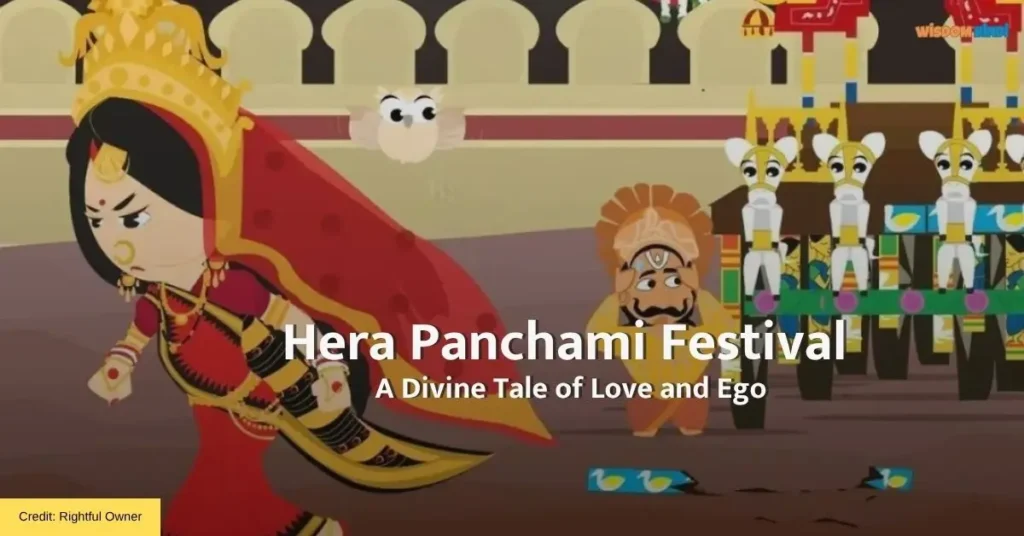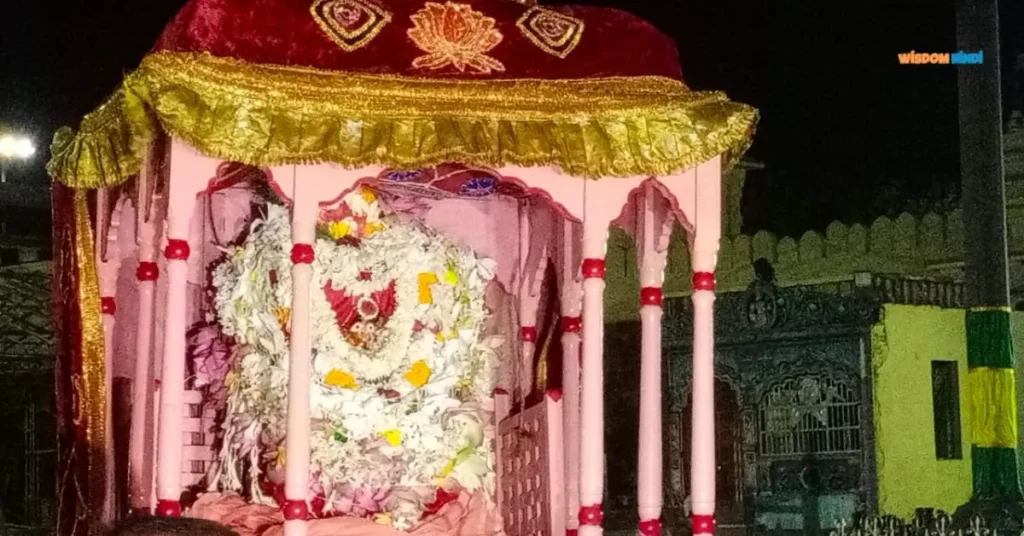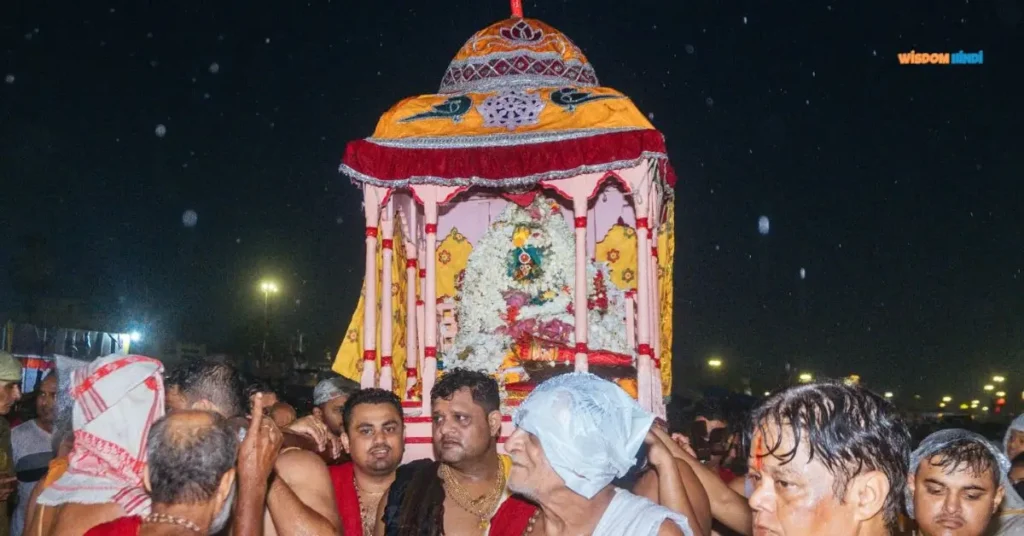
Hera Panchami Festival: A special and unique aspect of Lord Jagannath’s Rath Yatra held in Puri, Odisha is Hera Panchami. It is celebrated on the fifth day of the Rath Yatra, i.e., the Panchami of Shukla Paksha of the month of Ashadha.
The Rath Yatra begins with the Chhera Pahara ritual in which the King Gajapati of Puri cleans the chariots with a broom made of gold. After this, the devotees take all three chariots to the Gundicha Temple where the Lord rests for 9 days. Many rituals and traditions are held during this period, one of which is the Hera Panchami Festival.
This special day is dedicated to Lord Jagannath’s wife, Goddess Lakshmi. What is the Hera Panchami Festival, what is the story behind it, and what are the spiritual beliefs associated with it? You will get the answers to all these questions in today’s article. So read it till the end.
Hera Panchami day and its significance
Heera Panchami, celebrated on the fifth day of Jagannath Rath Yatra, is dedicated to Lord Jagannath’s wife Mahalakshmi. On this day, Goddess Lakshmi departs from Sri Mandir to Gundicha Temple in the form of Suvarna Mahalakshmi. This festival reflects the love and light banter between Goddess Lakshmi and Lord Jagannath.
Read More: Dahuka Boli: The Sound That Moves Lord Jagannath’s Chariot
Hera Panchami is made up of two words: Hera = to see, and Panchami = fifth day. The literal meaning of this word is the darshan of Lakshmi. It reflects Goddess Lakshmi’s longing and deep desire to reunite with her husband. This day brings alive the human form of the Lord and the emotions of his family life.
The story of Hera Panchami
The story of the Hera Panchami Festival is an interesting story of love and resentment between Lord Jagannath and Goddess Lakshmi. When Lord Jagannath left for the Rath Yatra with sister Subhadra and brother Balabhadra, he left Goddess Lakshmi in the Sri Mandir. When the Lord stayed for 9 days to rest at his aunt’s house Gundicha Mandir, Mata Lakshmi did not get a chance to spend time with him, due to which she became sad and angry.
On the fifth day after the Lord’s departure, Goddess Lakshmi, adorned like a golden celestial being, journeyed to the Gundicha Temple in a grand palanquin to convey both her displeasure and affection. After reaching there, she expressed her desire to meet Lord Jagannath. But due to some traditions, the temple gate was closed and she did not get a chance to meet the Lord.

Angry with this, Mata Lakshmi breaks a wheel of Lord Jagannath’s chariot, Nandighosha, after which she does not return to Sri Mandir and goes to her temple located in Hera Gohari Sahi of Puri. When Lord Jagannath came to know about Mata Lakshmi’s displeasure, he went to convince her.
The event in which Lord Jagannath consoles and reunites with Goddess Lakshmi on the final day of the Rath Yatra is known as Bahuda Yatra. On this day, the Lord returns to the Shri Mandir, marking their divine reunion.
This Hera Panchami Story is deeply rooted in the Vaishnav traditions and local folk beliefs of Puri, which beautifully presents the human emotions and relationship between the Lord and his wife. It gives the message to the devotees that God also experiences the emotions of love, anger, and reconciliation just like humans.
Rituals performed on Hera Panchami
On the occasion of Hera Panchami, the idol of Goddess Lakshmi is beautifully adorned as Suvarna Mahalakshmi, dressed in silk garments and adorned with gold jewelry. She is then ceremoniously carried in a grand palanquin from the Sri Mandir to the Gundicha Temple. Devotees participate in this yatra with great enthusiasm and drums are played.
Priests perform special prayers at the Gundicha Temple. In some traditions, Goddess Lakshmi is made to have darshan of Lord Jagannath, while in others, symbolic rituals are performed to show her anger, such as breaking the wheel of Lord Jagannath’s chariot, Nadi Ghosh, in front of the Gundicha temple. Afterward, Goddess Lakshmi proceeds back to her shrine at the Lakshmi Temple in Hera Gohiri Sahi.

Cultural and religious significance of Hera Panchami
Hera Panchami Festival is not just a religious event but also a symbol of cultural and social unity. This festival highlights the importance of love, estrangement, and mutual compromise in married life. Goddess Lakshmi herself visiting the Gundicha temple is a symbol of women’s power and self-respect. This festival brings alive the Odia culture of Puri.
Conclusion
Thus, Hera Panchami is a very special part of Lord Jagannath’s Rath Yatra without which the Rath Yatra is not considered complete. It is a symbol of the love of Lord Jagannath and Goddess Lakshmi which fills the devotees with joy. This festival highlights the richness and devotion of Indian culture.
FAQ- Hera Panchami Festival
What happens on Hera Panchami?
Hera Panchami is observed on the fifth day of the Jagannath Rath Yatra, during which Goddess Lakshmi is beautifully adorned and taken to the Gundicha Temple to visit Lord Jagannath. Where a wheel of Lord Jagannath’s chariot is broken to show her anger.
1 thought on “Hera Panchami: A Celebration of Emotion, Devotion and Deeper Meaning in the Rath Yatra”